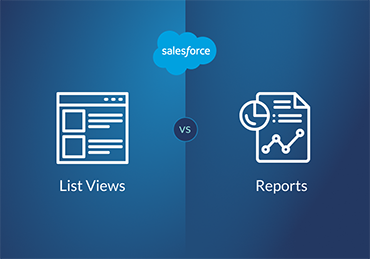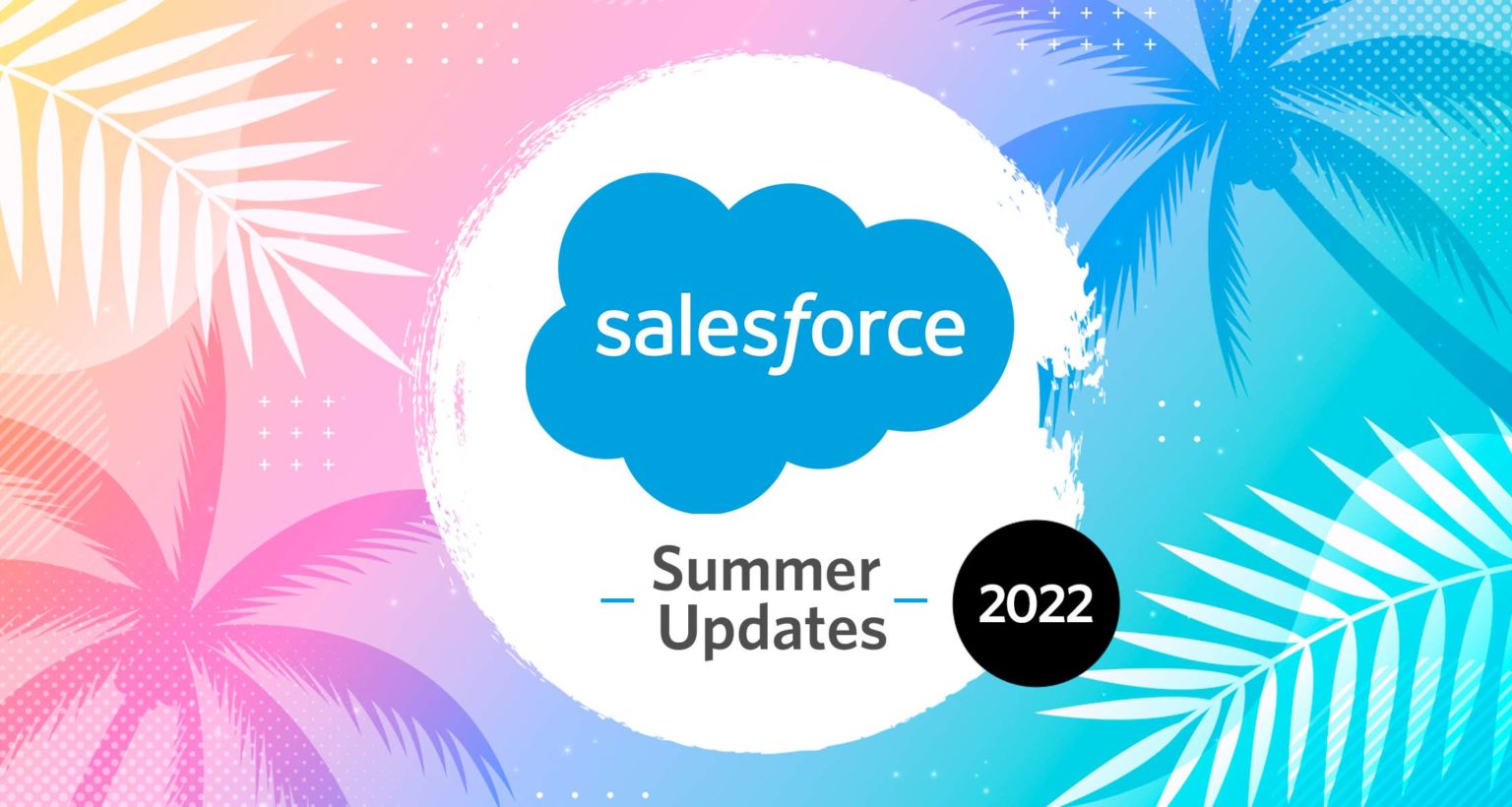Salesforce is one of the most popular customer relationship management (CRM) tools used by non-profits and associations. Part of the reason Salesforce has become so popular is because it’s so easy to use. Salesforce offers a wide variety of tools and processes that help organizations run smoothly – without the use of code. In fact, Salesforce was just recognized as a Leader by Gartner Inc. in its 2023 Magic Quadrant for Enterprise Low-Code Application Platforms. Low-code and no-code platforms are ideal for organizations that need functionality, but don’t have a development team in-house.

Two prime examples of no-code or configuration based Salesforce data tools are List Views and Report Builder.
When you’re working with Salesforce, though, really understanding the differences between List Views and Reports is crucial. Once you know the difference and define the purpose for each tool, you can make the most out of your data and improve your team’s productivity.
List Views
List Views are a powerful tool for organizing and displaying data in Salesforce. They allow you to quickly filter and sort your data based on specific criteria. When viewing data in List View, you’ll be looking at a clean, easy-to-follow table of information. In List View, you can customize your data display by selecting and organizing the fields you want to see. This way, you’re getting the information you need without having to sort through what you don’t.
Quick and efficient data access isn’t the only thing List Views are used for. List Views can also be used to manage member data effectively. For instance, you can create a List View to see all members who haven’t renewed their membership, or those who have yet to register for an upcoming event. List Views like this can make it easier for your association to execute targeted marketing campaigns and prevent members from being lost in the shuffle. You can also save your List Views as a personal or shared view, making it easy to access frequently used searches.
Salesforce List Views are an incredible asset to associations, but it’s important to emphasize that they cannot perform data analysis or generate summary reports. They are best suited for day-to-day tasks that require quick access to relevant data.
Reports
Salesforce Reports offer more advanced functionality and analysis tools than list views. You can use them to summarize and analyze data in a variety of ways, including charts, tables, and graphs. Just like with List View, you’ll be looking at data that’s been sorted to your specifications, but you’ll also see relevant data analytics that allows for in depth analysis.
With Salesforce Reports, you can create custom reports to analyze and measure your members’ engagement. For example, you can create a report to track the number of event registrations per member category, or monitor the progress of your membership campaign. Reports are a great way to take the raw data you’ve been collecting and turn it into easy-to-understand summaries about performance.
Reports are also helpful for identifying trends and patterns in your data, identifying areas for improvement, and tracking progress over time.
While Salesforce Reports are undeniably important, it is important to note that using them properly and effectively requires that advanced underlying report types already exist. Once those are in place, the reports you need to generate can be easily created. If you and your association are not familiar with report creation, it’s best to seek assistance from a Salesforce expert to get started.
When should I use a List View versus a Report?
Overview of List Views
- Basic filtered views of records
- Quickly segment data
- View information from a single object
What you CAN do with List Views
- Allows users to create views specific to them
- Can filter and “report” on data while viewing data on an object
- Use the List View results to mass edit records, such as following multiple records and editing data on multiple records
- Contact List View results can be added to Campaigns
- Loads up to 50 values at a time — simply scroll down to load the next 50 values
- Bulk updates on List Views can be performed for up to 200 records at a time
What you CAN’T do with List Views:
- Cannot export data. Unless you use an AppExchange Partner.
- Data limited to a single object
Overview of Reports
- Used to summarize, calculate, and analyze data
- Combines data from multiple records
- Standard and Custom Reports
- 4 standard report types: Tabular, Summary, Matrix, or Joined
- Export to Excel or CSV
- Reports can display up to 2000 rows of data — additional rows can be viewed once exported
What you CAN do with Reports:
- View data across objects, such as Contacts with a set of Interest Areas and/or Geographies
- Ability to summarize data, such as Activity/Task data (Open for a specific user, All Closed for a time period, etc.)
- Schedule Reports
What you CAN’T do with Reports:
- Joined Reports cannot be exported to Excel
- Complex Salesforce architecture and configuration may limit how many objects can be seen on a single Report
Both tools bring a lot to an organization’s table, but it’s crucial to understand their limitations. While List Views are ideal for day-to-day tasks and offer quick access to relevant data, they cannot perform data analysis or generate summary reports. Reports, on the other hand, require an understanding of the data structure to create, and they’re only available to Salesforce users with the appropriate permissions.
Salesforce offers powerful tools for associations like yours to organize and analyze data. List Views and Reports are both valuable features that can help association staff members manage their data in different ways. By understanding the differences between List Views and Reports, as well as their limitations, associations can make the most of these powerful tools while improving their productivity and efficiency.



 Exceed your business goals with the Summer ’22 release by seamlessly integrating your data, finding meaningful insights, and building lifelong customer relationships.
Exceed your business goals with the Summer ’22 release by seamlessly integrating your data, finding meaningful insights, and building lifelong customer relationships.

 The
The 